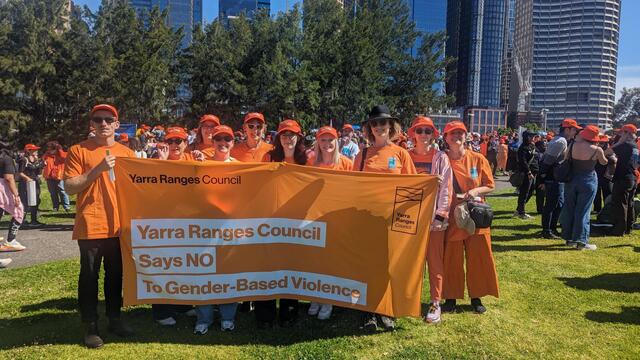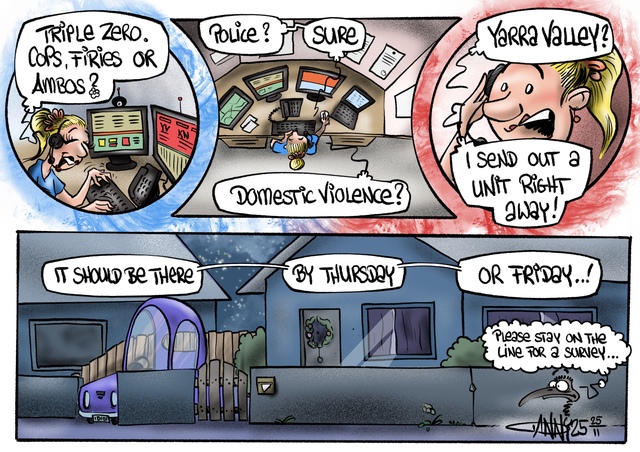By Wendy Williamson and Kath Gannaway
Local emergency services workers are eagerly anticipating the introduction of a new Victorian road rule aimed at keeping them safe.
From 1 July, drivers must slow to 40km/h when passing a stationary or slow-moving emergency vehicle responding to an emergency with flashing lights or a siren sounding.
The new rule applies to police, ambulance, SES, CFA and MFB vehicles with flashing lights or a siren.
It also applies to VicRoads Transport Safety Service vehicles with magenta flashing lights.
Drivers who flout the new road rule face a $277 fine or a court penalty of as much as $793.
“It’s good news” was the reaction of Warburton Police Sergeant Tom Wilkinson.
“It’s a move forward in respect to emergency service members’ safety,” Sgt Wilkinson said.
“We see it all the time where people should be responding to emergency lights by slowing down, should anticipate that there is some risk, but they don’t.
“This rule is making a plea to a person’s common sense, but now there will be enforcement behind it as well,” Sgt Wilkinson said.
“It’s unfortunate that that is the case, but it will help ensure the safety of emergency workers.”
After passing the vehicle, drivers should not increase speed again until reaching a safe distance from the scene, so that emergency workers can do their job without fear of being hit by passing traffic.
It is because of the number of emergency workers killed or injured on Victorian roads after being struck by passing vehicles or debris that the State Government is introducing the new road rule.
In a recent survey, almost one in five emergency services workers said they’d had four or more “near misses” while stopped on the roadside over the past three years.
Emergency workers are often out in the worst kind of weather when conditions such as fog, rain or poor light can make it hard for drivers to see emergency workers.
Upper Yarra SES Controller Steve Green also welcomed the new rule saying one of the main concerns at a crash scene, or where they are doing tree-removal, is to preserve the scene and keep emergency workers safe.
“We usually park a rescue vehicle in a fend-off position, but some people have tunnel vision so often don’t look properly.
“This will make people slow down.”
The changes are the result of extensive consultation with Victoria Police, Ambulance Victoria, Metropolitan Fire Brigade, the Country Fire Authority, WorkSafe, Emergency Management Victoria, Department of Justice and Regulation, the Transport Accident Commission and RACV.
Minister for Roads and Road Safety Luke Donnellan explained: “Emergency services workers are telling us that they feel in danger while they’re doing their job – we’ve listened to them and made these changes to protect the people who are out there protecting the community.
“Most people already do the right thing and slow down when they see flashing lights ahead, but this new rule will make sure that everyone passes at a safe speed.”
Minister for Health and Ambulance Services Jill Hennessy added: “Our emergency workers have stressful and demanding jobs, protecting us when we are at our most vulnerable. We’re making these changes so they can do their job without fear of being injured or killed by a passing vehicle.
“It’s a simple message – when you see flashing lights ahead, slow to 40 to keep our emergency workers safe. It might mean you arrive at your destination a little later, but it could save a life.”







